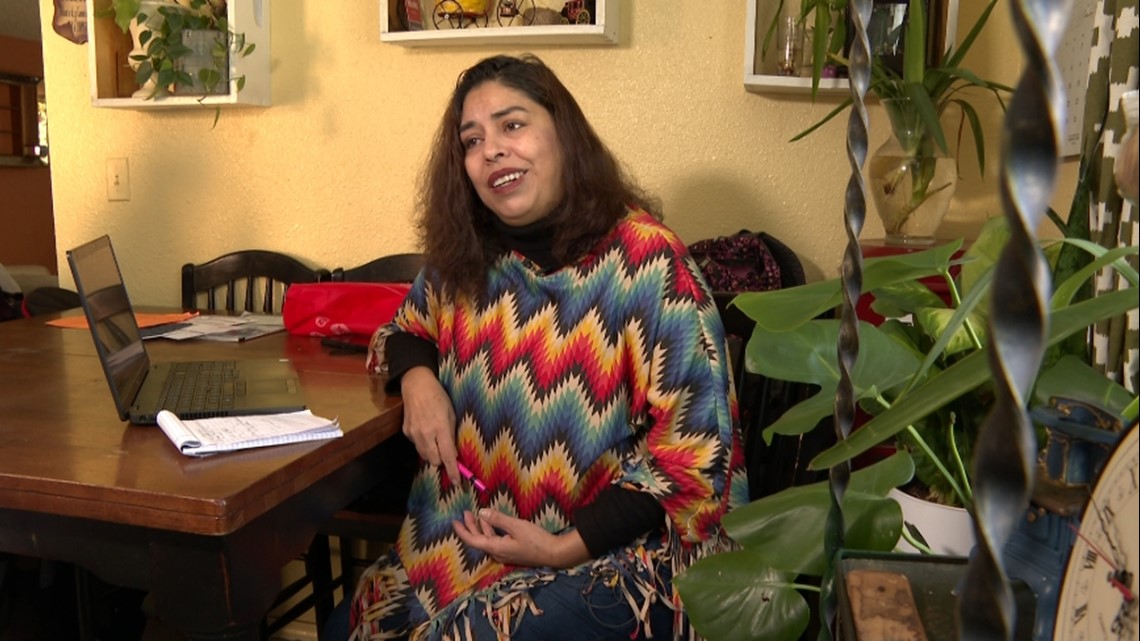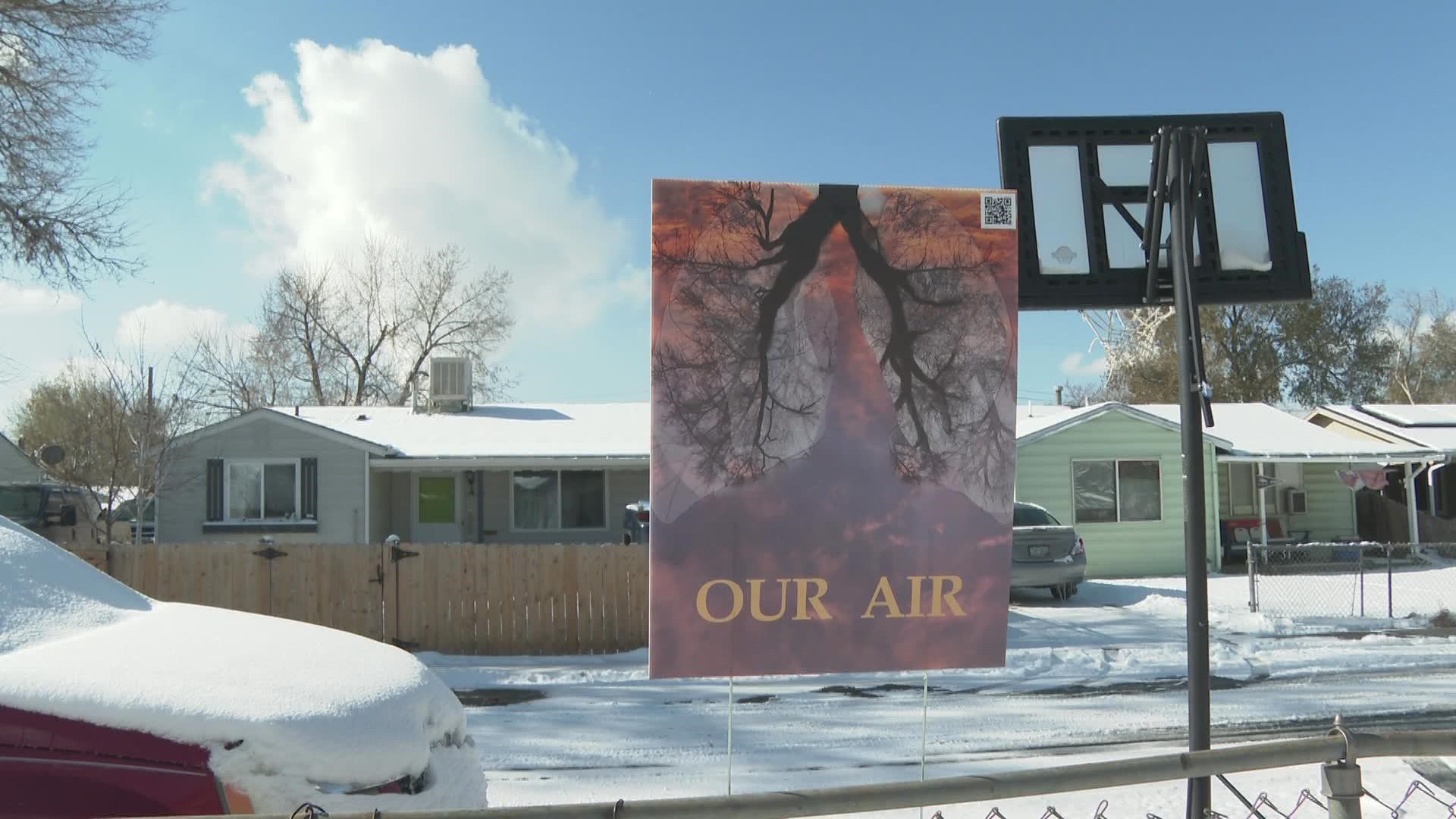COMMERCE CITY, Colo. — Coloradans disproportionately affected by pollution say they're fighting for their lives.
People living next to some of the biggest polluters say they're dealing with cancer, asthma, migraines and diabetes. The new Environmental Justice Act is trying to address these environmental health disparities.
A statewide task force finished a year of working on how to help communities cope with environmental concerns.
On Monday, recommendations were submitted to the legislature and the Colorado Department of Public Health and Environment. It suggested:
- Improving available data to help with the understanding of pollution in a community
- Identifying the best practices for community engagement
- Increasing cooperation between state agencies to identify a more holistic approach to reducing pollution
Researchers working with CDPHE data on the topic identified a number of areas that are the most burdened with environmental justice problems. These communities are both more prone to health problems from pollution and have fewer resources due to educational levels and income.
Problems near the Suncor refinery
Lucy Molina lives in Commerce City with her two teenage children and two dogs. They are 2 miles from the Suncor refinery, which produces diesel, asphalt and jet fuel.
She called the task force’s recommendations a “beginning step.”
“We still have lots of work to do,” she said.
Molina said her grandmother died from leukemia. She said cancer, diabetes and asthma are common ailments among her family and the community. According to the Environmental Protection Agency (EPA), diabetes may be tied to air pollution.
“That’s normal around here,” she said. “It’s normal to have cancer. It’s normal to have migraines and bloody noses. That’s normal. Well, it shouldn’t be.”


According to a 2020 study published by the American Cancer Society, there is “substantial evidence” of cancer caused by air pollution, which echoed research conducted by the World Health Organization.
In 2020, CDPHE announced a $9 million settlement between the department and Suncor for repeated air quality violations. CDPHE said that $2.64 million of the money went to projects to improve the situation in communities near Suncor.
Molina said that was not enough for the damage done to her neighborhood.
“It was pocket change - what was given to this community,” Molina said.
Molina said she has to use a water jug to cook and buys water bottles for her kids to drink from.
“Everybody here knows, we do not drink the water here,” Molina. “We do not cook with the water. That’s been happening since I was a kid.”
A representative for Suncor sent slides from a community meeting in response to 9NEWS' request for comment that claims that air monitoring data does not reveal any "adverse health effects" and "calculated cancer risks were within the range deemed acceptable by the U.S. EPA and CDPHE."
Communities most affected by pollution
9Wants to Know identified 250 communities throughout Colorado that are in the 80th percentile or higher for the environmental burden the community bears, using the CDPHE tool EnviroScreen. The EnviroScreen tool pulls in a number of factors, like pollution in the air, water and proximity to a highway, and measures how each community compares.
Joel Minor, Environmental Justice Manager at CDPHE said the department considers areas that are in the 80th percentile or higher to be worth additional focus and funding to fix issues.
Created by Zack Newman.
Some of the communities with the most environmental burden are in Denver County, with 59 designated areas in the 80th percentile or higher, and Adams County with 42 communities in that range:
- Denver County: 59
- Adams County: 42
- Arapahoe County: 32
- El Paso County: 32
- Pueblo County: 27
- Jefferson County: 26
- Weld County: 18
- Boulder County: 8
- Larimer County: 3
- Montrose County: 1
- Rio Grande County: 1
- Mesa County: 1
Each of these communities have high levels of pollution and have high rates of asthma, among other issues.
Minor said CDPHE will aim to implement more inspections in these high-risk areas.
“We know that some communities bear more burden of pollution than others and it makes sense for us to deploy more of our inspection resources in those communities,” he said.
Many industrial facilities are located where more people of color live and Minor said that this is in part due to redlining and zoning rules.
“That mix of intentional and unintentional exclusionary zoning policies has led to many of the environmental justice challenges we face today with some communities being exposed to more pollution than others,” Minor said.
Molina said that communities of color are often treated as less-than by the government and large corporations.
“We’re on the Titanic and we’re on the poorest, lowest floor,” Molina said. “We are sinking and we ain’t got a way out and they don’t want to let us out. They don’t want to help us.”
CDPHE announced a new grant initiative will begin on November 21, where up to 10 grants totaling $1 million will be provided to fund initiatives like increasing air pollution monitoring or adding high quality air filters to homes and schools. Non-profit organizations, governments, corporations and schools can apply for up to $250,000. Applications are due Feb. 3, 2023.
Minor said residents are also encouraged to give feedback on what they want to see from CDPHE as they test air quality for problems across Colorado. Residents can add input through 2023.
Molina said she is in this fight for the long-haul and wants to stay. Pollution should leave, not her family.
“Why I would I rip my family away from the only community they’ve ever known?” she asked.
Percentiles are a data strategy used to compare different areas to one another. For example if a community is in the 80th percentile, that means that only 20% of other areas measured were more burdened. In other words – the neighborhood with an EnviroScore of 100 is the most burdened by environmental concerns compared with elsewhere in the state. That is an indicator of the site of the worst environmental problems statewide.
Read about our data process here.
Reach investigative reporter Zack Newman through his phone at 303-548-9044. You can also call or text securely on Signal through that same number. Email: zack.newman@9news.com. Call or text is preferred over email.
SUGGESTED VIDEOS: Colorado Climate
Take a deeper dive into the data:

